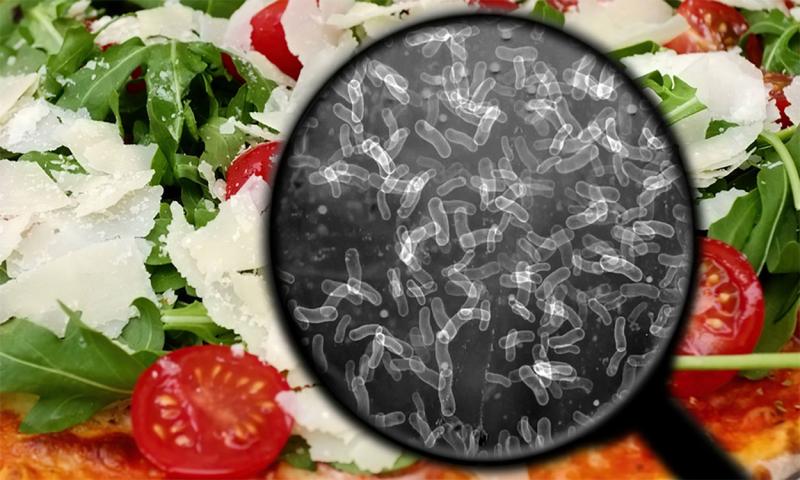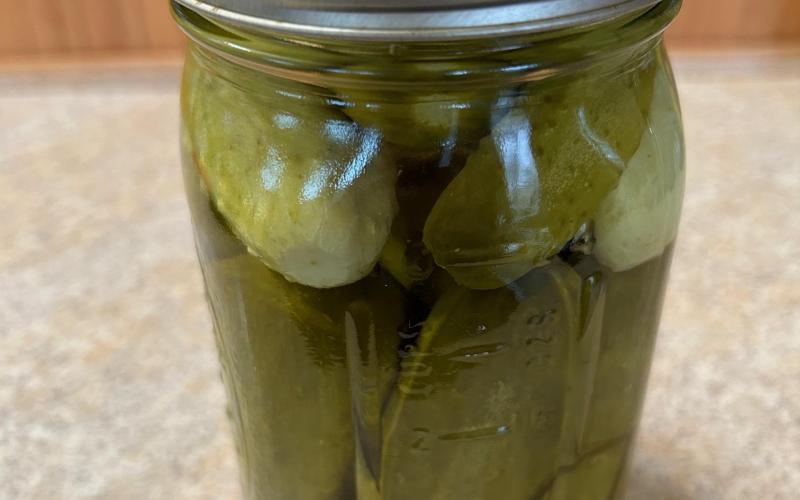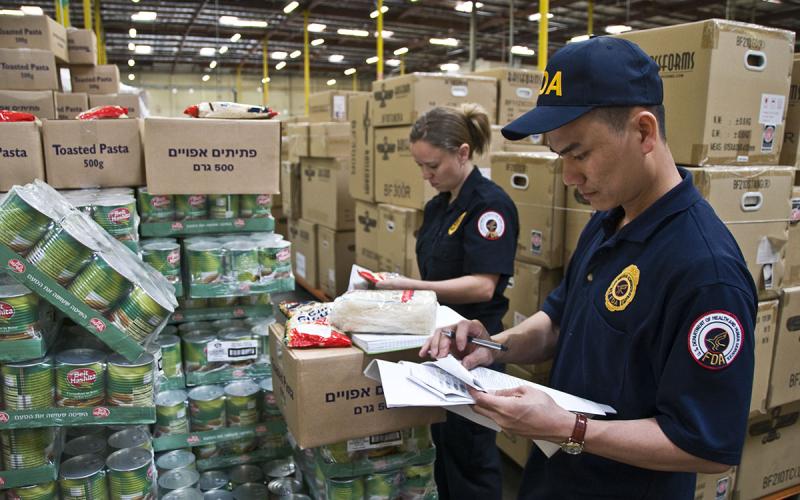Written by Claudia Botzet, former SDSU Extension Nutrition Field Specialist.
The Center for Disease Control and Prevention estimates there are about 48 million cases of foodborne illnesses every year in the United States. These illnesses are common, costly, and can be life threatening. Foodborne illnesses are caused by consuming foods that are contaminated with bacteria, viruses, or parasites.
Anyone can be a victim of a foodborne illness. However, some populations are at a higher risk including infants, young children, pregnant women, older adults, and those with weakened or compromised immune systems.
What Causes Foodborne Illness?

Bacteria
Most types of bacteria are not harmful. Our bodies are inhabited by good bacteria on our skin, in our gut, and digestive system. The good bacteria make up our microbiome. See The Human Gut Microbiome for more information. However, there are certain bacteria that can make us sick. The bad bacteria are called pathogens. Pathogens are microorganisms that cause disease. They can reproduce rapidly in the body and produce toxins that make us sick.
Viruses
A virus is an infectious microbe that cannot replicate on its own. It must infect cells and use a host to make copies of itself. Viruses can infect humans, animals, plants, bacteria, and fungi. Humans can have a viral infection, and either have symptoms, or have none.
Parasites
Parasites are similar to viruses, as they rely on a host. However, parasites need a host to not only spread, but survive. They feed and grow in ways that are harmful to their host.
Most-Common Foodborne Illnesses
Most-Common
The top-5 foodborne illnesses in the United States are:
- Norovirus
- Salmonella (non-typhoidal)
- Clostridium perfringens
- Campylobacter
- Staphylococcus aureus
Causing Hospitalization
The top-5 foodborne illnesses causing hospitalization in the United States:
- Salmonella (non-typhoidal)
- Norovirus
- Campylobacter
- Toxoplasma gondii
- E. coli 0157
Causing Death
The top-5 foodborne illnesses causing death in the United States:
- Salmonella (non-typhoidal)
- Toxoplasma gondii
- Listeria monocytogenes
- Norovirus
- Campylobacter
Onset Times, Symptoms, and Food Sources
Below are some of the most-common foodborne illnesses, along with their onset times, signs and symptoms, duration, and food sources that may cause them. If you believe you or a loved one has contracted a foodborne illness, please seek medical care and guidance.
Campylobacter
- Onset Time: 2 to 5 days
- Symptoms: Diarrhea, cramps and fever. Vomiting and diarrhea may be bloody.
- Duration: 2 to 10 days
- Food Sources: Raw and undercooked poultry, unpasteurized milk, and contaminated water.
Clostridium Perfringens (also known as Perfringens food poisoning)
- Onset Time: 8 to 16 hours
- Symptoms: Intense abdominal pain and watery diarrhea.
- Duration: About 24 hours
- Food Sources: Meat, poultry, gravy, precooked foods, dried foods, and time or temperature-abused foods.
E. coli producing toxin
- Onset Time: 1 to 3 days
- Symptoms: Watery diarrhea, abdominal pain, and some vomiting.
- Duration: 3 to 7 days but may last longer.
- Food Sources: Food or water contaminated with human feces. Undercooked beef, unpasteurized milk and juice, raw vegetables and fruit, and contaminated water.
E. coli 0157
- Onset Time: 1 to 8 days
- Symptoms: Severe diarrhea (sometimes bloody), abdominal pain, and vomiting.
- Duration: 5 to 10 days
- Food Sources: Food or water contaminated with human feces. Undercooked beef, unpasteurized milk and juice, raw vegetables and fruit, and contaminated water.
Listeria monocytogenes
- Onset Time: 9 to 48 hours for gastro-intestinal symptoms, and 2 to 6 weeks for the disease to invade.
- Symptoms: Fever, muscle aches, nausea and diarrhea. Pregnant women may have mild, flu-like symptoms, and the infection can lead to preterm delivery or stillbirth.
- Duration: Varies case by case,
- Food Sources: Ready-to-eat deli meat, unpasteurized milk, and soft cheeses made with unpasteurized milk.
Norovirus
- Onset Time: 12 to 48 hours
- Symptoms: Nausea, vomiting, abdominal pain, diarrhea, headache and fever. Diarrhea is more prevalent in adults and vomiting in children.
- Duration: 12 to 60 hours
- Food Sources: Raw produce, contaminated water, uncooked or cooked foods that haven't been reheated properly after contact with infected food handler, and shellfish from contaminated water.
Salmonella (non-typhoidal)
- Onset Time: 6 to 48 hours
- Symptoms: Vomiting, diarrhea, abdominal cramps, and fever.
- Duration: 24 to 48 hours
- Food Sources: Eggs, poultry, meat, unpasteurized milk or juice, cheese, and contaminated raw vegetables and fruits.
Staphylococcus aureus (also known as Staphylococcal food poisoning)
- Onset Time: 1 to 6 hours
- Symptoms: Sudden onset, severe nausea and vomiting, abdominal pain, and possible diarrhea and a fever.
- Duration: 24 to 48 hours
- Food Sources: Unrefrigerated meats, salads such as egg salad and potato salad, and cream pastries.
Toxoplasma gondii
- Onset Time: 5 to 23 days
- Symptoms: Flu-like symptoms, fever, headaches, muscle aches, skin rash, and swollen lymph nodes.
- Duration: Weeks to months
- Food Sources: Undercooked and contaminated meat and shellfish, cross contamination via knives, cutting board and unwashed hands.
References
- Cleveland Clinic. Bacteria.
- National Human Genome Research Institute. Virus.
- Cleveland Clinic. Parasites.
- Center for Disease Control and Prevention. Foodborne Germs and illnesses.
- Federal Drug Administration. What You Need to Know About Foodborne illnesses.


